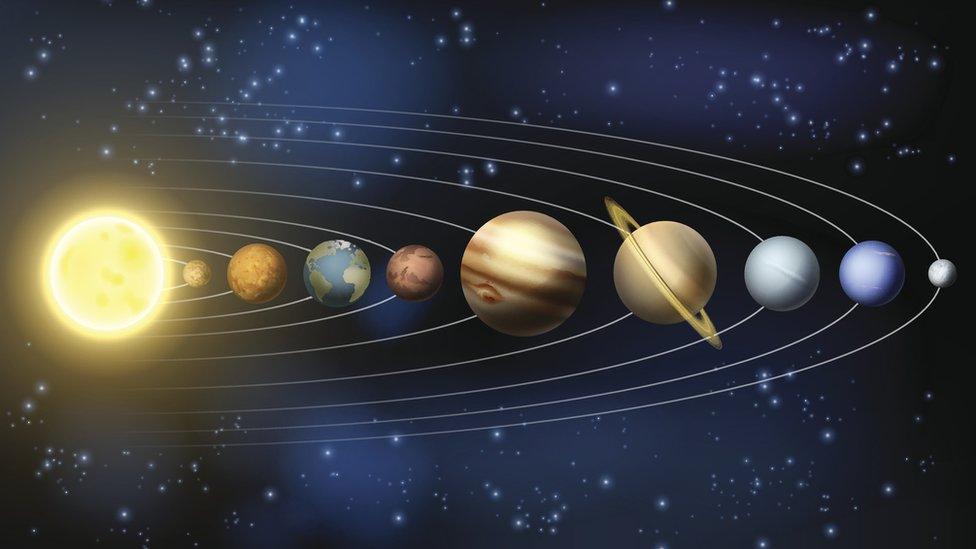Planetary parade: How you can see five planets in the sky
- Published
- comments

Five of the eight planets in our solar system will be visible this weekend
It's pretty cool spotting even one planet in the night sky - but how about five?
On Saturday 17 June, Mercury, Uranus, Jupiter, Neptune and Saturn will be very close together in the sky, and you might be able to see a couple of them.
An alignment like this, also known as a planetary parade, happens when the planets in our solar system all reach a similar point in their journey around the Sun, known as their orbit.
Planet spotters will need a pair of binoculars or a telescope to see the full effect but even if you don't have those things you should still be able to see some of the planets.
Read on to find out more.
How can I see the planets?
Most of the planets will be visible just before sunrise on 17 June.
You'll want to face east and ideally have a good view of the horizon without any obstructions.
Saturn will be the highest in the sky, and Mercury will be the last of them to rise.
While you'll need binoculars or a telescope to see Neptune and Uranus as they're much further away, Jupiter and Saturn will be easy to spot with the naked eye.
Mercury will unfortunately be impossible to spot as it's really close to the Sun.
If you cannot see the quiz, click here.
- Published4 October 2019
- Published7 April 2021
- Published20 April 2018
